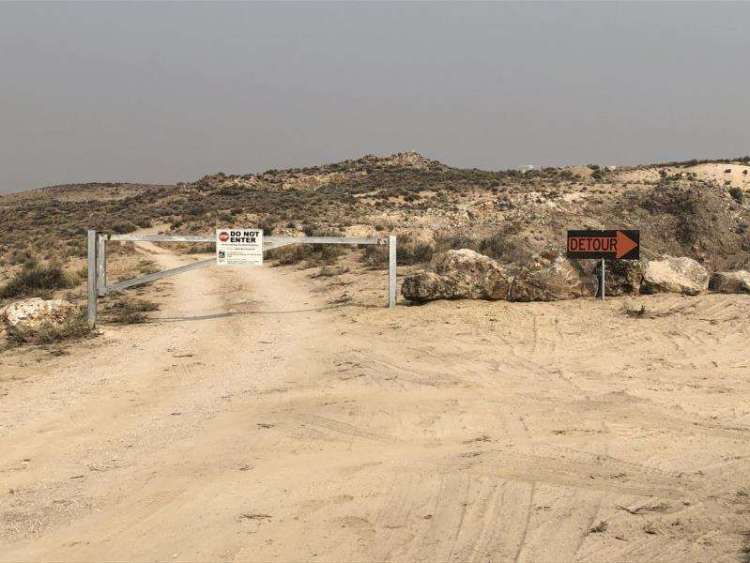Massive hills of pinkish red rock stand along a lonely dirt road in far southeastern Oregon, near the Nevada border. They’re beautiful, reminiscent of Oregon’s treasured Painted Hills.
But there’s one big difference: these rocks are toxic.
The hills are not actually hills at all—they’re piles of mercury mining waste from the old Opalite Mine, one of four historic mercury mines in the area that left piles of the contaminated material, called calcine, after they stopped operating. The waste piles contain the heavy metals arsenic, mercury and antimony. Dust from the rocks is hazardous if inhaled.
For years locals would haul off truckloads of rock from these former mercury mines to use as fill for roads, driveways and landscaping. In 2014, the U.S. Environmental Protection Agency completed a $1.2 million Superfund cleanup in the nearby town of McDermitt, Nevada, and on the Fort McDermitt Indian Reservation, where the calcine had been used on residential properties, unpaved roads and at the town’s school.
Until last summer, anyone could wander by or seek out the old Opalite Mine. In August 2020, EPA, with support from Oregon DEQ, secured and restricted access to the Opalite Mine—the last of the four mercury mines where people could still come across contaminated gravel.

“Our goal was to reduce access to the site because it’s dangerous,” said Bryn Thoms, DEQ cleanup project manager who oversaw the operation. “There are the heavy metals plus the hazards from the pit and old mine buildings themselves.”
Vehicle access is now restricted to the site by gates, berms and a bypass road that goes around the site. EPA and its contractors also installed restricted access signs to notify people of the hazards, and removed, stabilized and reburied a pile of mine waste that contained extremely high concentrations of contaminants.
“I’m just glad we were finally able to finally do something about the contamination at this site,” said David Anderson, DEQ Eastern Region cleanup manager, who worked for decades on site analysis and securing funding for the operation. “EPA stepped up with funding and construction crews so we could get this site secured.”

A 2003 “Orphan Site Designation” that Anderson worked on deemed the former mine owner unable to pay to maintain or cleanup the site, and allowed for DEQ to take on some of those costs. DEQ used Orphan Site funds to investigate the extent of contamination and do some initial work to stabilize the site. Anderson was able to secure additional funding via EPA’s Removal Program, which was enough to complete the summer 2020 construction that restricted access. DEQ will use Orphan Site funds for ongoing maintenance of the site, gates, signage and bypass road.
Learn more about the Opalite Mine cleanup on DEQ’s Environmental Site Information Database.
— Laura Gleim, public affairs specialist






One thought on “Old mines pose many dangers: Why DEQ and EPA restricted access to the old Opalite mercury mine”
Comments are closed.